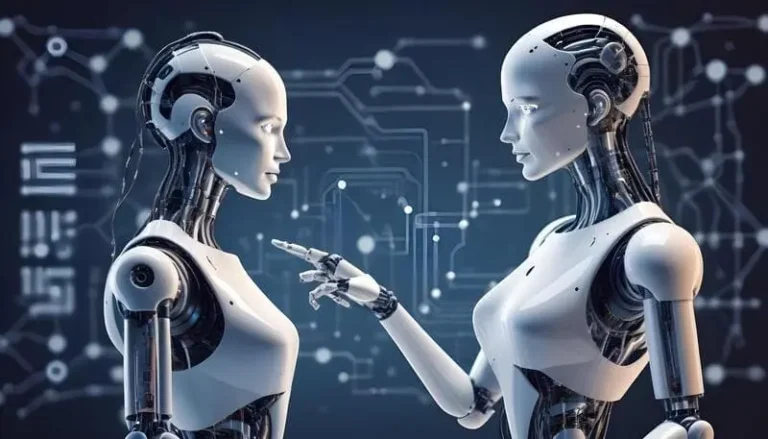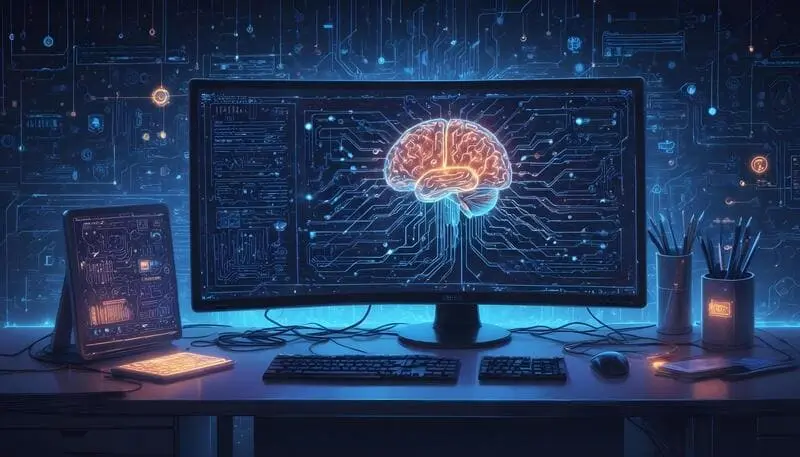You’ve probably heard the terms Artificial Intelligence (AI) and Machine Learning (ML) thrown around, often interchangeably. But while they’re closely related, they’re not the same thing. Think of it this way: machine learning is a subset of AI. In other words, machine learning is one way to achieve AI, but AI itself is a broader concept.
In this blog, we’ll break down the difference between AI and machine learning, how they work together, and why it’s important to understand both as we move further into the age of smart technology.
1. What Is Artificial Intelligence (AI)?
Artificial Intelligence refers to the broader concept of machines or systems performing tasks that typically require human intelligence. This can include anything from recognizing speech and making decisions to playing chess or driving a car. AI aims to mimic human intelligence, allowing machines to learn from experience, adjust to new inputs, and carry out tasks just like humans.
Some common examples of AI in our everyday lives include:
- Voice assistants like Siri and Alexa
- Chatbots that answer customer service inquiries
- Recommendation systems on platforms like Netflix or YouTube
- Self-driving cars that navigate roads and make real-time decisions
AI can be narrow (focused on one specific task) or general (capable of performing any intellectual task a human can), though general AI is still a goal we haven’t fully achieved yet.
2. What Is Machine Learning (ML)?
Machine Learning is a specific approach to achieving AI. In simple terms, ML is a method of teaching computers to learn from data and improve over time without being explicitly programmed for each task. The key to machine learning is that the machine doesn’t just follow pre-programmed rules—it learns from experience and adjusts its behavior as it processes more data.
Here’s how it works:
- A machine learning algorithm is fed large amounts of data (e.g., thousands of photos of cats and dogs).
- The algorithm analyzes the data to recognize patterns and figure out what makes a cat different from a dog.
- Over time, it gets better at distinguishing between cats and dogs on its own.
Machine learning is used in many areas today, such as:
- Spam filters that learn what’s junk mail and what’s not
- Personalized recommendations on shopping sites like Amazon
- Fraud detection systems that learn to spot unusual patterns in financial
3. AI vs. Machine Learning: What’s the Difference?
While AI is the broader concept of machines performing tasks in a smart way, machine learning is a technique used to achieve that intelligence. Essentially, all machine learning is AI, but not all AI involves machine learning.
To clarify further:
- AI refers to any system that can perform tasks that typically require human intelligence (e.g., speech recognition, playing chess).
- Machine Learning is a specific approach to AI that involves training machines on data so they can learn and improve over time.
In other words, machine learning is a tool within the AI toolkit, and it’s one of the most popular ways to develop AI systems today. Other AI methods include rule-based systems and expert systems, which don’t rely on learning from data.
4. How Do AI and Machine Learning Work Together?
AI and machine learning are closely connected because machine learning is currently one of the most powerful ways to achieve AI. Many of the most impressive AI applications today—like voice assistants, facial recognition, and recommendation algorithms—use machine learning to continuously get better.
For example:
- Netflix recommendations: Netflix’s AI system uses machine learning to analyze your watching habits and suggest new shows or movies based on your preferences. The more you watch, the more data the algorithm has to work with, and the better it gets at predicting what you’ll enjoy.
- Google search's engine: Google’s AI uses machine learning to understand search queries and deliver the most relevant results based on the massive amounts of data it collects about user behavior and search patterns.
5. Types of Machine Learning
There are different types of machine learning, each designed to handle different kinds of tasks. Here are the three main types:
Supervised Learning
In supervised learning, the machine is given labeled data (for example, pictures labeled as either “cat” or “dog”) and it learns to make predictions based on that data. The goal is to train the machine to correctly label new, unseen data by learning from the patterns in the training set.
Unsupervised Learning
In unsupervised learning, the machine is given data that isn’t labeled, and it has to find patterns or relationships in the data on its own. For example, an unsupervised learning algorithm might group customers with similar shopping habits together to help a company better understand its target market.
Reinforcement Learning
In reinforcement learning, the machine learns by trial and error. It takes actions and receives feedback in the form of rewards or penalties. Over time, it learns to make better decisions to maximize its rewards. This type of learning is often used in gaming or robotics.
6. Why Understanding the Difference Matters
Understanding the difference between AI and machine learning is important because they are shaping the future of technology and how we interact with the world. Here’s why it matters:
- AI is more than just machine learning: While machine learning is a crucial part of AI, it’s not the only method. Other approaches, like rule-based systems, also play a role in AI development.
- Different applications: Some AI systems don’t need machine learning to function. For example, a chess-playing AI could follow pre-programmed rules without needing to learn from data, but a recommendation system like YouTube’s relies heavily on machine learning to improve.
- Evolving technology: As AI and machine learning evolve, understanding the difference helps us grasp how these technologies impact various fields, from healthcare and finance to entertainment and transportation.
Final Thoughts: AI and Machine Learning—Two Sides of the Same Coin
In summary, while AI is the broad concept of machines mimicking human intelligence, machine learning is one way to achieve AI by teaching machines to learn from data. These technologies are closely linked and often work together to create systems that can analyze information, recognize patterns, and make decisions.
The better we understand how AI and machine learning work, the more we can appreciate the incredible advancements they’re driving in our everyday lives—and the potential they have for shaping the future.
Want to learn more about how AI and machine learning can impact your business or daily life? Get in touch with us today for insights on how to leverage these powerful tools.





